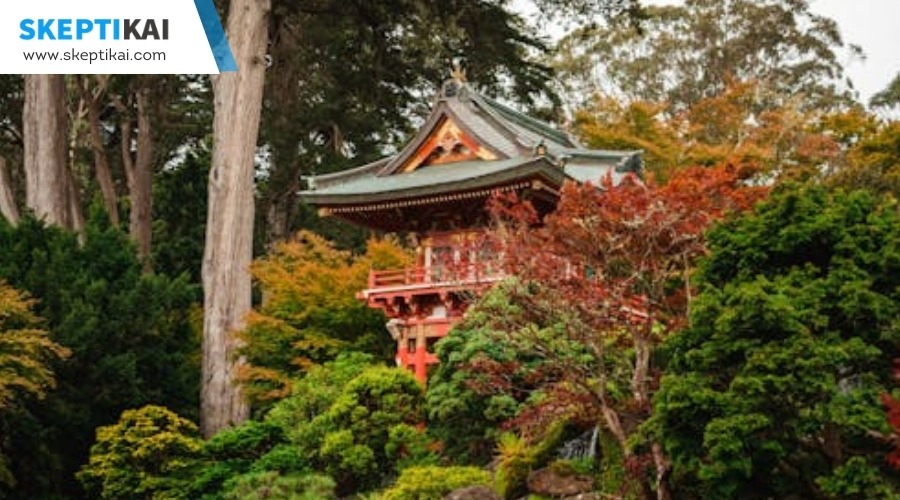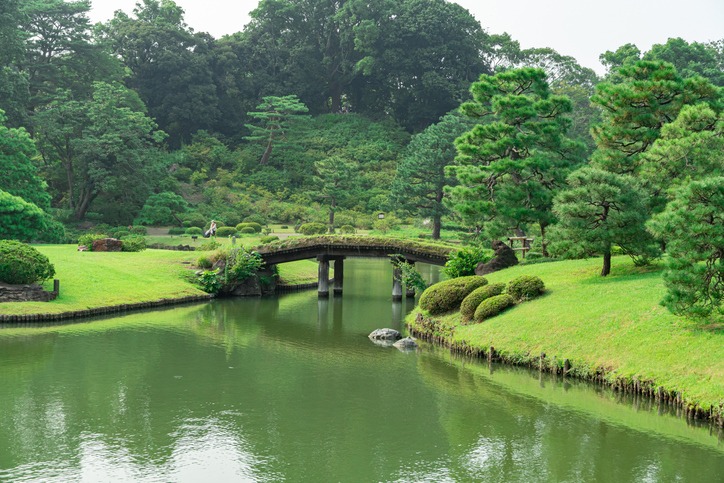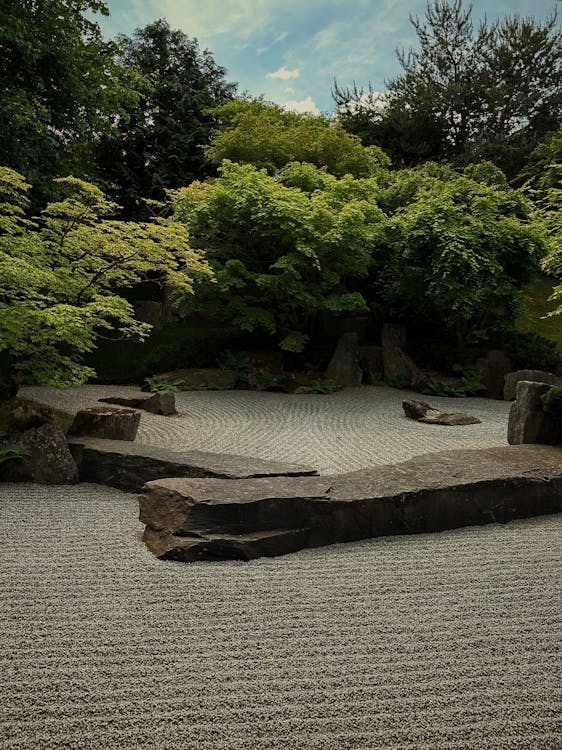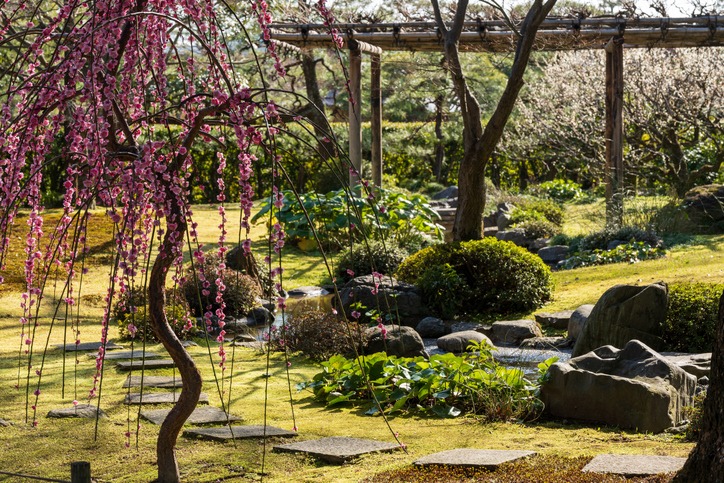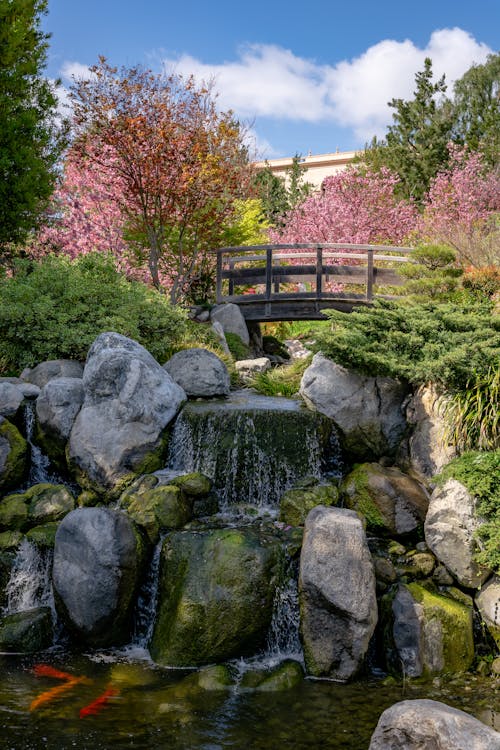Stepping into a Japanese garden, you’re entering a world where every leaf and stone tells a story of harmony with nature. You’ll find yourself enveloped in an art form that bridges the gap between the human spirit and the natural world, using elements like water, stone, and plants to weave a narrative of balance and serenity.
As you explore the symbolic significance behind the tranquil ponds and meticulously placed rocks, you might wonder how these elements come together to create such a peaceful yet dynamic environment. Let’s embark on a journey to uncover the secrets of these serene landscapes, and perhaps, in doing so, you’ll discover something about yourself.
The Essence of Water
Water embodies the ever-flowing essence of life in Japanese gardens, inviting you to reflect and find tranquility. In these meticulously crafted spaces, water isn’t just a component; it’s a vital expression of nature’s rhythm and harmony. As you meander through a Japanese garden, you’ll encounter various forms of water—tranquil ponds that mirror the sky, babbling streams that whisper secrets, and serene fountains that offer a rhythmic backdrop to your thoughts.
This presence of water does more than add beauty; it creates a continuous thread of natural music, enhancing the garden’s peaceful ambiance. It’s in these moments, beside a still pond or listening to a gently flowing stream, that you find a profound connection to the natural world. Water in Japanese gardens isn’t merely decorative. It’s a symbol of spiritual cleansing, rebirth, and self-reflection. The careful placement of water elements within these gardens provides you with spaces for peaceful contemplation and relaxation, allowing you to harmonize with nature on a deeper level.
Stones and Symbolism
As you explore further, you’ll notice that stones play a crucial role in Japanese gardens, symbolizing the enduring strength and spiritual essence of nature. These elements aren’t merely decorative; they embody immutability, strength, and are considered the dwelling place of gods. The way stones are creatively used, especially in uneven terrain, helps create naturalistic landscapes that evoke a deep sense of peace and wonder.
In designing these gardens, stone arrangements form the backbone of dry gardens and miniature seas, showcasing an ingenious blend of artistry and nature. These stones, with their varied shapes and sizes, complement the surrounding vegetation, enhancing the overall harmony of the garden. It’s this meticulous placement and selection of stones that reflect the profound unity between man and nature, a core principle in Japanese garden philosophy.
The symbolism of stones in Japanese gardens extends beyond mere aesthetics; it’s a reminder of the unity and harmony that can exist between the natural world and human craftsmanship. Through their presence, stones invite you to contemplate the enduring qualities of nature and the delicate balance required to maintain harmony within the garden and beyond.
Asymmetry and Balance
Exploring beyond the symbolism of stones, you’ll find that the principles of asymmetry and balance are equally vital in shaping the serene ambiance of Japanese gardens. Asymmetry in these gardens mirrors the natural world’s inherent irregularity, offering a more authentic and engaging experience. You’ll notice that no two elements are perfectly aligned, which might seem counterintuitive at first. However, this intentional placement plays a crucial role in achieving the overall balance within the garden’s design.
The beauty of a Japanese garden lies in its ability to combine elements like asymmetrical buildings and rocks in a way that feels harmonious and natural. This careful spatial arrangement ensures that every component, though not symmetrically placed, contributes to the garden’s sense of equilibrium. Achieving this balance between asymmetry and order is a hallmark of Japanese garden design, subtly reminding you of the beauty found in nature’s imperfections.
Plant Life Harmony
In Japanese gardens, the harmonious integration of plant life, from evergreens to vibrant florals, plays a pivotal role in crafting the tranquil atmosphere. You’ll find that the consistency of pines, boxwood, and holly adds a timeless quality to these landscapes. These gardens aren’t just about the trees and shrubs themselves but how they complement the natural surroundings and distant views to create an overall harmonious atmosphere.
Rare and colorful plants are introduced with care, adding pops of color to the serene green backdrop. It’s not just about the visual appeal; it’s about adding vibrant elements that don’t overshadow the garden’s peaceful essence. Grasses and mosses play their part too, enhancing the texture and visual appeal, making every step through these gardens a treat for the senses.
The art of planting and shaping plants is crucial in Japanese gardens. It ensures that the plant life doesn’t just coexist with the surrounding nature but blends seamlessly, reflecting a profound reverence for the environment. This meticulous approach to the integration and shaping of plants showcases a deep understanding of how gardens, trees, shrubs, and all plant life can come together in a symphony of natural beauty.
Scenic Objects and Vistas
Moving beyond the vibrant flora, let’s consider how scenic objects like bridges and stone lanterns further enrich the harmony of Japanese gardens. These elements, more than mere decorations, deeply integrate into the overall design, enhancing the garden’s aesthetic and spiritual essence. Stone lanterns, in particular, aren’t just ornamental; they’re symbolic beacons of light and guidance, illuminating paths both literally and metaphorically. Their presence adds a layer of tranquility, inviting you to pause and reflect.
Bridges play a similarly profound role, symbolizing the passage from the physical world to the spiritual realm. As you cross, you’re not just moving from one point to another; you’re transitioning into a state of deeper contemplation and connection with nature.
But it’s not just about the individual scenic objects. Their thoughtful placement within the garden creates focal points that draw the eye, adding layers of visual interest. The vistas, or carefully framed views, further contribute to the garden’s harmony. They offer snapshots of nature that are meticulously composed to promote a sense of peace and tranquility. Together, these elements weave a complex tapestry of beauty, inviting you to lose yourself in the serene harmony of the garden.
Seasonal Changes and Beauty
As seasons shift, you’ll witness Japanese gardens transform, showcasing the ephemeral beauty of nature through vivid cherry blossoms in spring and fiery foliage in autumn. This ever-evolving canvas not only reflects the transient beauty of nature but also offers immersive experiences that captivate the senses. You’ll see how the gardens serve as a mirror to the passing seasons, with blooming sakura trees and vibrant autumn leaves enhancing the natural beauty and creating a dynamic, ever-changing environment.
The seasonal changes in these gardens aren’t just about witnessing nature’s palette shift. They’re an invitation to engage mindfully with the environment. As you walk through a garden bathed in the soft pinks of cherry blossoms or the rich reds and golds of autumn leaves, you’re encouraged to slow down and appreciate the moment. This mindfulness practice highlights the interconnectedness between the changing seasons and the timeless tranquility of the garden space.
Through the seasonal transformations, Japanese gardens teach us about the beauty of the moment and the importance of harmony with nature. Each visit offers a unique experience, reminding you of nature’s cycles and the value of living in the present.
Conclusion
In exploring Japanese gardens, you’ve witnessed how water’s flow, the symbolism in stones, and the careful balance of asymmetry unite to create harmony with nature. You’ve seen how plant life enhances this tranquil setting and how scenic objects frame breathtaking vistas. Seasonal changes bring this beauty to life, reminding you of nature’s cycles.
Let these gardens inspire you to find peace in the natural world, embracing the serene balance and unity that they so elegantly embody.
